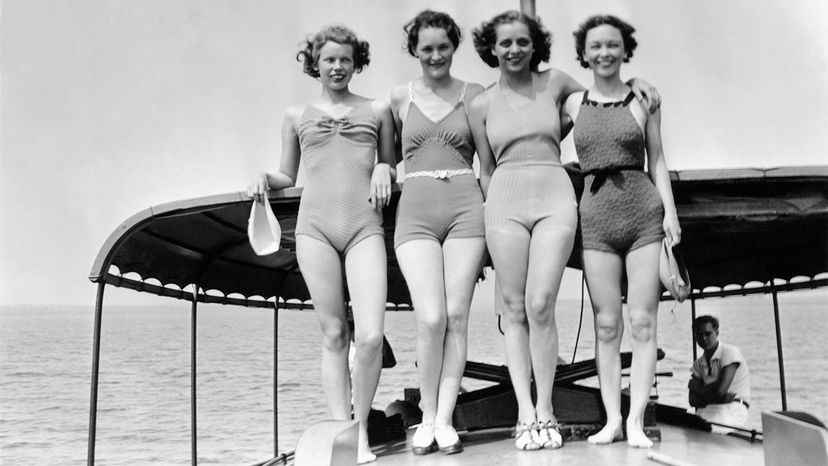
Modern women may think they have swimsuit issues but compared with the "swimming costumes" of yesteryear, the currently available fashion is straight up enviable, whether you're going for full coverage or a little less. Still a relatively new invention, swimsuits have undergone a tremendous overhaul over the last century or so.
In this episode of the podcast "Dressed: A History of Fashion," hosts April Calahan and Cassidy Zachary dive deep into the complicated history of fashion's arguably most controversial garment.
Advertisement
The ocean may have formed 3.8 billion years ago, but swimming didn't become a popular pastime until around the early 19th century, and was known then as "bathing." The advent of this leisure pursuit begged the question of what a person should wear. Men, not being subject to the same archaic modesty rules as women of the day, had it easy. However, since showing skin has traditionally been inextricably linked with sex and morality, women were totally up a creek, so to speak. This modern shift was actually in stark contrast to the ideals of thousands of years ago, when ancient Romans and Greeks took pride in the athletic body, even displaying paintings of women in two-piece garments. Oh, the horror!
Fast-forward many, many years and the influence of Christianity was evident on the development of the bathing costume. (The first known use of "swimsuit" didn't occur until 1926, says Merriam-Webster.). In fact, the original bathing suits for most of the 19th century required women to be covered from foot to neck in a long-sleeved belted dress on top of pants, often while still outfitted in cumbersome pantaloons. Insult to injury time — this combo was typically made from wool, thanks to its water-resistant properties. As our hosts point out, the entire ensemble easily weighed around 30 pounds (nearly 14 kilograms) when wet!
Elaborate though this outfit was, it paled in comparison to the spectacle of actually being on the beach. In fact, women of the era were expected to go into a small wooden house (fully clothed), which could be rented on the beach. Once safely tucked away inside this "bathing machine," she changed into the bathing costume, only daring to emerge after the house had been pulled into the water by a team of horses. Then, she could exit the hut, swim in relative privacy thanks to the shelter of the waves, re-enter the hut and be pulled back to shore, with her virtue intact.
Go ahead, eye-roll so hard. We'll wait.
Although many women today would undoubtedly revolt against such a process, this getup stayed around for an astonishingly long time. Even after people started to get woke and develop better options they were still difficult to wear, much less swim around in. Plus, these somewhat curve-hugging, slightly skin-baring outfits incited much controversy, inspiring debate, laws regulating bathing suits and even throngs of police swarming beaches to arrest violators.
Eventually, however, the tide started to turn on public opinion about bathing suits, and some much-needed alterations were made to the garment.
Tune in to the podcast to learn more about the people and companies who facilitated this change, as well as the extreme lengths they had to go to. Then, don your swimsuit with pride and strut your stuff, confident that no one's going to arrest you unless you go really wild.
Advertisement

